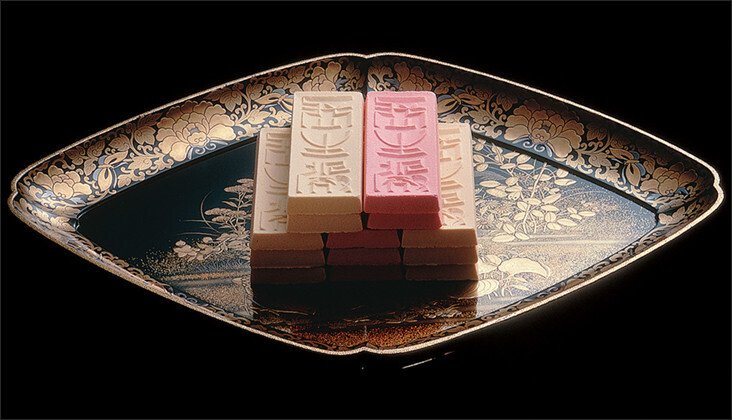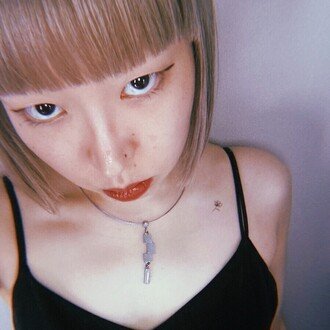
Dig Japan vol.33 “Rakugan (落雁)”
Dig Japan is a series in which I research and introduce in English topics related to traditional Japanese culture that interest me. In this article, I will introduce rakugan.
Rakugan is wagashi called “uchimono” made by mixing starch syrup or sugar with flour made from rice, beans, buckwheat, chestnuts, etc., coloring it, pressing it into a mold, and drying it. It is said to have originated in Western to Central Asia, and was introduced to Japan via China during the Muromachi period. It became established during the Edo period, and is still served at tea ceremonies, memorial services, and other events today.

Rakugan is a traditional higashi (dried confectionery) that can be considered the representative of uchimono. There are two ways to make it: one is to add starch syrup or sugar to steamed and dried rice flour, pack it into a mold, and dry it in a thermostatic chamber, and the other is to add starch syrup to raw rice flour, mold it, steam it, and dry it in a thermostatic chamber.
The former is usually called rakugan and the latter “Hakusetsuko,” and in the Kansai region it is also called “Hakusenko.” The latter is famous for “Koshi no Yuki” from Nagaoka City, Niigata Prefecture, but after repeated improvements, the recipe is now very close to the former.
The method of making rakugan is based on the “Nanrakukan” from the Ming Dynasty in China. It is a confectionery made by kneading wheat flour or rice flour with starch syrup and fats, then drying it. It is believed to have originated in Western Asia or Central Asia, and was introduced to China during the Yuan Dynasty. And this was introduced to Japan during the Muromachi period through trade between Japan and the Ming Dynasty, and spread with the rise of the tea ceremony.

In 1581, confectioner Itakura Hirokata began making “Gosho Rakugan” (now called “Itomaki Gosho Rakugan”), and in the early Edo period it became widely known as a tea confectionery. During the Edo period, the Kaga domain launched large-scale measures to encourage the confectionery industry, and in Kanazawa city, rakugan techniques evolved, leading to the creation of a rakugan called “Choseiden.”
In addition, in the Matsue domain, Matsudaira Harusato (Matsudaira Fumai) encouraged wagashi and the tea ceremony, leading to the creation of a rakugan called “Yamakawa.” It is counted as one of Japan's three great confections, along with “Koshi no Yuki” and “Choseiden.”
Rakugan was often used as tea sweets or as offerings at Buddhist ceremonies, and became a standard confectionery served before usucha in the tea ceremony. This makes rakugan one of the more luxurious Japanese sweets. Wasanbon or refined brown sugar is used for such formal occasions. They are not only delicious, but also have a beautiful design. We can enjoy the delicate carvings and colors of various seasonal and auspicious motifs such as flowers, fruits, fish, and boats.
This article was written by 𝐡𝐢𝐫𝐨𝐤𝐨, working as a freelance translator and PR for overseas apparel brands in Japan, with the aim of broadening her own knowledge of traditional Japanese culture and spreading it to the world.
いいなと思ったら応援しよう!

